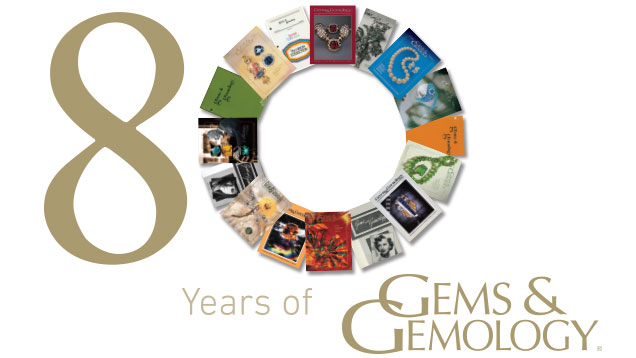80 Years of Gems & Gemology
April 14, 2014

Over these eight decades, G&G has been a critical resource for the gem and jewelry industry. Groundbreaking articles on diamond grading appeared as early as the 1940s. Through the Lab Notes section, GIA gemologists reported on the latest treatments and synthetics, which helped to protect the trade and the public.
Clarity enhancement of emeralds and diamonds. High-tech color enhancement of rubies and sapphires. Synthetic rubies, emeralds, sapphires and—perhaps the greatest challenge—synthetic diamonds. All have been explained through the pages of G&G.
At the same time, the journal has introduced to the world new gem materials such as moissanite; explored historic and new gem deposits from Colombia to Mozambique; and reported on rapid developments such as the emergence of China’s cultured pearl industry and diamond mining in Canada.
“For 80 years, G&G has been one of the principal professional journals for information on gem materials of all kinds. Its contents reveal the evolution of the science of gemology,” said Dr. James Shigley, GIA Distinguished Research Fellow. G&G continues to evolve under the editorship of Duncan Pay. While the journal will retain its scientific rigor, Pay’s vision is to reach a broader audience and further integrate its groundbreaking research into GIA education.
“G&G is backed by GIA’s laboratory, giving us unmatched resources to investigate the important issues of the day. This makes it a unique vehicle for advancing the study of gemology and for educating our students and the trade professionals,” noted Pay.
All 80 years of G&G are available for free download at www.gia.edu, thus broadening its reach around the globe. Gem and jewelry professionals can easily access a library of diverse and relevant articles. We also asked the journal’s editor and key contributors to pick ten landmark articles, and their selections are fascinating and illuminating. View the landmark articles here.
If history is a guide, the next 80 years promise to be even brighter than the first.



